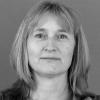Junior researcher General Practice Care
Publicatie
Publication date
Vaccine Coverage Dutch National Pneumococcal vaccination Program Adults 2024: brief monitor.
Laarman, C., Heins, M., Stelma, F., Hooiveld, M. Vaccine Coverage Dutch National Pneumococcal vaccination Program Adults 2024: brief monitor. Utrecht: Nivel, 2025. 3 p.
Between 2020 and 2024, adults aged 60 years and older were invited for pneumococcal vaccination in different age cohorts each year. In 2024, during the fourth vaccination campaign using this strategy, people born between 1961 and 1964 (aged 60 to 63) were invited for vaccination. Of these, 45.4% were vaccinated.
In 2024, the vaccine coverage was 45.4% for the age cohort 60 to 63. In the previous years, vaccine coverage was 56.4% for the age cohort 63 to 66 in 2023, and 63.0%, 74.1%, and 73.0% for the 66 to 69 (2022), 69 to 73 (2021), and 73 to 76 (2020), age cohorts respectively. Vaccination coverage differed by year of birth within each age cohort. For example, vaccination coverage was 49.9% and 42.8% for birth years 1961 and 1964, respectively. Overall, vaccination coverage decreases with younger age. Gender differences were also observed. In 2024, vaccination coverage was higher among women (49.3%) compared to men (42.1%).
The target population of the pneumococcal vaccination program for adults consists of people aged 60 years and older. Consequently, those invited for pneumococcal vaccination are also eligible for influenza vaccination. A strong correlation was observed between both vaccinations, which are often provided simultaneously. Adults with respiratory conditions had the highest pneumococcal vaccine coverage of all the adults who had a medical indication for influenza vaccination.
In 2024, the vaccine coverage was 45.4% for the age cohort 60 to 63. In the previous years, vaccine coverage was 56.4% for the age cohort 63 to 66 in 2023, and 63.0%, 74.1%, and 73.0% for the 66 to 69 (2022), 69 to 73 (2021), and 73 to 76 (2020), age cohorts respectively. Vaccination coverage differed by year of birth within each age cohort. For example, vaccination coverage was 49.9% and 42.8% for birth years 1961 and 1964, respectively. Overall, vaccination coverage decreases with younger age. Gender differences were also observed. In 2024, vaccination coverage was higher among women (49.3%) compared to men (42.1%).
The target population of the pneumococcal vaccination program for adults consists of people aged 60 years and older. Consequently, those invited for pneumococcal vaccination are also eligible for influenza vaccination. A strong correlation was observed between both vaccinations, which are often provided simultaneously. Adults with respiratory conditions had the highest pneumococcal vaccine coverage of all the adults who had a medical indication for influenza vaccination.
Between 2020 and 2024, adults aged 60 years and older were invited for pneumococcal vaccination in different age cohorts each year. In 2024, during the fourth vaccination campaign using this strategy, people born between 1961 and 1964 (aged 60 to 63) were invited for vaccination. Of these, 45.4% were vaccinated.
In 2024, the vaccine coverage was 45.4% for the age cohort 60 to 63. In the previous years, vaccine coverage was 56.4% for the age cohort 63 to 66 in 2023, and 63.0%, 74.1%, and 73.0% for the 66 to 69 (2022), 69 to 73 (2021), and 73 to 76 (2020), age cohorts respectively. Vaccination coverage differed by year of birth within each age cohort. For example, vaccination coverage was 49.9% and 42.8% for birth years 1961 and 1964, respectively. Overall, vaccination coverage decreases with younger age. Gender differences were also observed. In 2024, vaccination coverage was higher among women (49.3%) compared to men (42.1%).
The target population of the pneumococcal vaccination program for adults consists of people aged 60 years and older. Consequently, those invited for pneumococcal vaccination are also eligible for influenza vaccination. A strong correlation was observed between both vaccinations, which are often provided simultaneously. Adults with respiratory conditions had the highest pneumococcal vaccine coverage of all the adults who had a medical indication for influenza vaccination.
In 2024, the vaccine coverage was 45.4% for the age cohort 60 to 63. In the previous years, vaccine coverage was 56.4% for the age cohort 63 to 66 in 2023, and 63.0%, 74.1%, and 73.0% for the 66 to 69 (2022), 69 to 73 (2021), and 73 to 76 (2020), age cohorts respectively. Vaccination coverage differed by year of birth within each age cohort. For example, vaccination coverage was 49.9% and 42.8% for birth years 1961 and 1964, respectively. Overall, vaccination coverage decreases with younger age. Gender differences were also observed. In 2024, vaccination coverage was higher among women (49.3%) compared to men (42.1%).
The target population of the pneumococcal vaccination program for adults consists of people aged 60 years and older. Consequently, those invited for pneumococcal vaccination are also eligible for influenza vaccination. A strong correlation was observed between both vaccinations, which are often provided simultaneously. Adults with respiratory conditions had the highest pneumococcal vaccine coverage of all the adults who had a medical indication for influenza vaccination.





